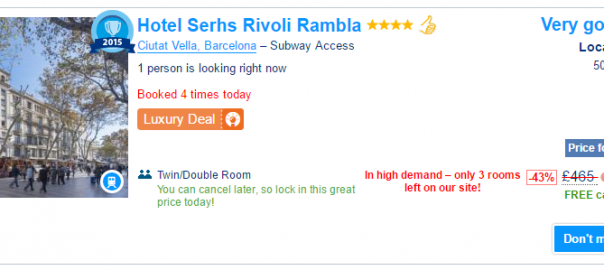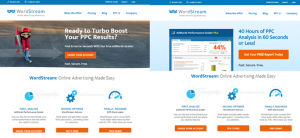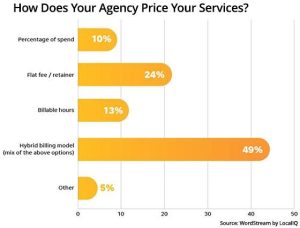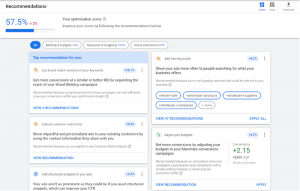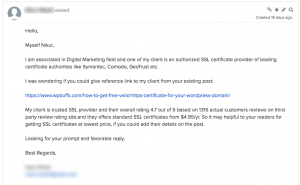You know the old style used car sales routine? The one with all of the stretching of the truth, fake declarations of urgency and pretty poor recommendations for your needs? Yeah, like Danny DeVito in Matilda.
Well whether you’ve seen the film or not, he’s not a nice dude. And that type of sales really doesn’t fly anymore.
You shouldn’t be thinking about sales as shoving a square peg into a round hole. Sales in the 21st century should be all about helping your customers. Sales through service as we like to call it.
The confidence trickster type of sales, that we hope you’ve never had to deal with, is now extinct. It doesn’t develop the trust needed to convert. And pulling the wool over the customer’s eyes doesn’t instill loyalty.

Sales through service however, makes customers happy (I’m talking 98% customer satisfaction). Whilst, of course, improving your bottom line.
But how does this approach of providing outstanding customer experiences increase sales on your site? Well that’s what this post is all about.
Information is power
A crappy sales person doesn’t ask a potential customer many questions. They know what they want to sell, so they try to sell it to whoever they can. Whatever your problem is, they’ll tell you that they have the solution.
You should be doing it the other way around – that’s the sales through service technique.
You should be trying to discover their wants and needs. Then matching what they need with the best product recommendation that you can offer.

The EIM is a framework of suggested questions for our experts to ask consumers…so that they can get to the root of their problem.
The EIM provides talking points and helps to build conversations and relationships. Instead of the website visitor coming on to chat, and one of our team just saying “product X” will be great for that, with the first piece of information they receive. We want to take the customer on a journey.
We build up the information we have (and that they have about you) in order to provide the best advice. We don’t just list off a tonne of products for them to wade through either – we want to help them zone in on the perfect one.
Using additional information we can make the match more relevant and even identify relevant cross-sell or upsell opportunities.
Again, no shoving a square peg into a round hole. These cross-sell and upsell recommendations should only be done when relevant.
If I’ve told a live chat agent I can only spend £50, I don’t want them to keep suggesting a product at £75!
Open conversations up with exploratory questions, rather than closing them down with one recommendation answers (the kind that are fired off before even getting to know the customer).
Remember: a conversation is a two way exchange. Help them with what they need and you’re more likely to be able to make a sale!
Here’s an example. Imagine Bill is looking to buy some protein supplements, to make sure he’s making the most of his time at the gym. When he comes on to chat and tells us this, we don’t immediately recommend the first product we can think of. We open the conversation up.
These are some of the questions that we might ask:
- “What kind of training are you doing?”
- “Are you currently using anything similar to this?”
- “What price range are you looking at?”
Then we might ask even more until we know that we can make the right recommendation for Bill. The protein supplement that works well with his current diet, training, budget, etc.
This isn’t just a technique for live chat either. This is the premise used for highly personalized eCommerce emails. Based on previous website and buying behavior marketers make product recommendations. These personalized emails deliver 6x higher transaction rates compared to run-of-the-mill, generic email.
Of course, with live chat, you can do it all in real time instead of hoping that you can make a potential customer return.
Closing the sale
Once you’ve helped the customer make the right decision, it’s time to make sure that they can get what they want. And of course, make sure that your business is making a sale.
If the customer has made their decision you should then be guiding them to conversion. There are many barriers to conversion on every eCommerce and lead generation website – don’t let yours throw them off course. Be there if they need to query: shipping costs, how to get their promotional discount or any error codes that pop up.
If the customer says “Awesome, I’ll go buy it now!”, you still can’t be sure that they’ll succeed unless you close the sale.
If I bring it back to the Bill example from earlier, I can show you some better examples of how to transition into helping customers take the final step.
So once our recommendation has been made, and Bill is happy with his decision, we can start to guide him through to the next step with phrases such as:
- “Great you’re going with the whey protein powder, we’ll get it shipped to you as soon as we can.”
- “Now that you’ve added that to your basket, is there anything else I can help you find for your training?”
- “Do you need any help in completing payment for the whey protein?”
These phrases show that you’re there to help Bill through the final stages of purchase. And you’re there if the recommendation process needs to start again for anything else.
If Bill faces any problems in completing his order, he can just drop you a message on chat for you to fix it.Rather than Bill abandoning.
But it’s not just about making sure customers don’t hit barriers of course, you can use the live chat conversation to encourage conversion. Help the customer overcome any doubts they have about buying.
It’s probably the most common conversion barrier actually – “hmmm, I’m not sure if this is the right product for me”.
Again, this isn’t the time for trickery (it’s never the time for that in our opinion).
You don’t want them to buy unless it is indeed the right product. If it’s the wrong product they’ll be trying to return it next week. If it’s the right product they’ll be back to buy again and again. Increasing customer retention rates by 5% increases profits up to 95%.
Don’t trick consumers into taking the final step. Legitimately answer their concerns – help them to confirm that they have what they want and need.
You can also encourage consumers to convert by using some urgency techniques. Again, no used car sales trickery, please. We’re not going to tell them this banged up Honda Civic has had so much interest today. There isn’t another guy on the way back right now, with the cash for it.
You can however legitimately highlight when you are low on stock. This can be a service to the customer. If they don’t get one of these products, will they have to wait for the new stock to come in? That’s helpful – that’s making sure the customer gets what they want, when they need it.
In genuinely urgent situations such as this, it’s always good to highlight any no quibble refund guarantees that you might have. Again, it’s a great service that you are offering but it also encourages conversion.
If you are sure that the customer will love the product, encourage them to convert by letting them know they can return it if they aren’t 100% satisfied. If you really are sure that you’ve recommended the right product then they won’t need to!
Similar techniques can be used across your website. If there are instances where the customer could genuinely miss out on purchasing if they hang around too long, highlight it. This is a common technique that’s used on hotel booking websites, where getting the right dates is often crucial for the customer.

Conclusion
To increase sales you don’t have to become a confidence trickster.
The best way to increase sales and make customers happy is to operate a sales through service technique.
Simple techniques on chat and other elements of your website strategy can be beneficial to both you and the customer.
Help, don’t harass your website visitors.
Learn more about your customers so that you can recommend the right product. The right recommendation will encourage them to come back and buy and buy again.
Guide them through their purchase so that barriers to conversion don’t ruin their experience. They’ll be frustrated if they can’t buy what they have chosen AND you of course won’t make your sale.
This post was originally published on The Chat Shop blog.
Digital & Social Articles on Business 2 Community(63)
Report Post